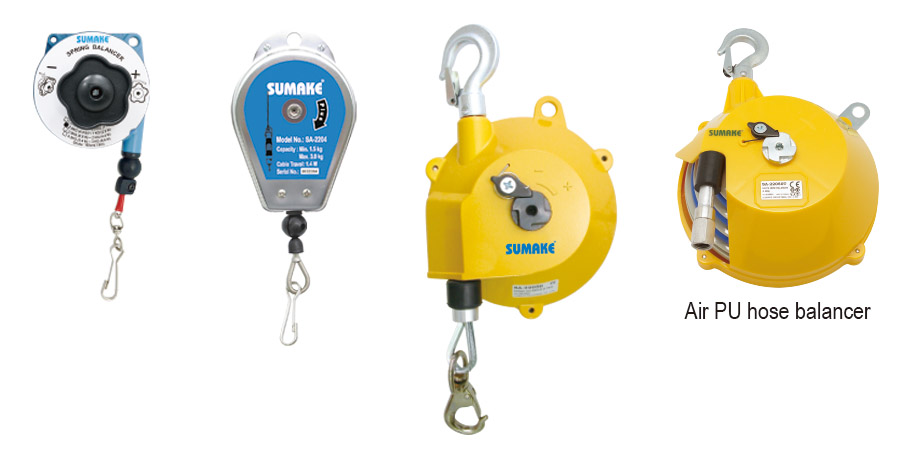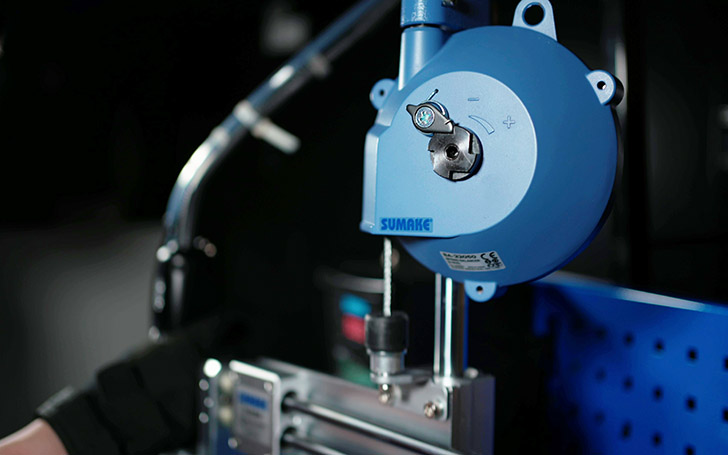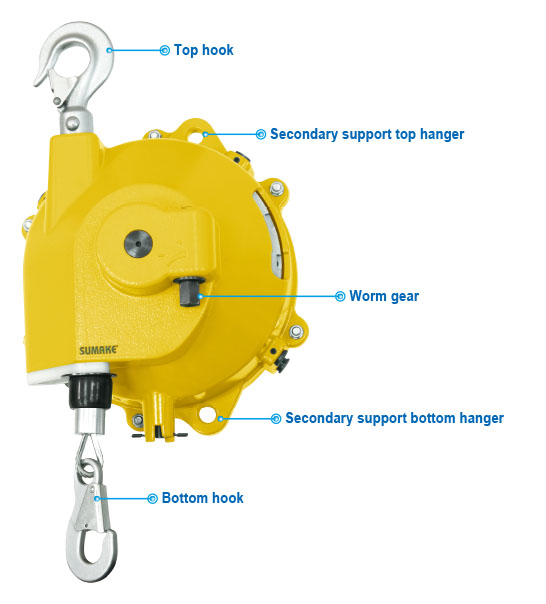What is a Spring Balancer? How does it work?
A Spring Balancer is a device that uses spring force to suspend, adjust, and support tools or objects. It is commonly installed in work environments to help reduce the weight of tools and enhance work efficiency.
Typically found in environments where heavy tools or items are used for extended periods, such as workshops and factories, it helps to reduce the physical strain on workers.

●Structure of a Spring Balancer
-Spring System: The core component of the Spring Balancer is the spring, which adjusts its tension based on the load to keep the object suspended and balanced.
-Steel Cable or Chain: Used to suspend the tool or object, connecting it to the spring system, allowing for lifting and lowering.
-Adjustment Mechanism: Some Spring Balancers come with an adjustable mechanism to alter the hanging height or load range according to specific needs.
-Housing: Protects the internal spring system from dust or external damage and provides greater stability.
●Main Uses of Spring Balancer
-Ease of Tool Movement: When workers need to use heavy tools, the Spring Balancer reduces the weight of the tool, making operations more convenient.
-Reducing Fatigue: Prolonged handling of heavy tools or objects can lead to fatigue. The Spring Balancer helps alleviate some of the weight, reducing strain.
-Improved Work Efficiency: With the tool being lighter and more movable, work efficiency and accuracy can be enhanced.
-Precise Control: The spring tension precisely controls the height and movement range of the tool, making it ideal for tasks requiring fine control.

●Advantages of Spring Balancers
-Reduces Physical Strain: By assisting with the weight of tools, the Spring Balancer makes it easier for workers to handle tools.
-Improves Accuracy: By reducing unnecessary tool movement or drops, it helps maintain tool stability and enhances work precision.
-High Safety: Reducing unwanted tool movement minimizes the risk of injury to workers.
-Simple and Easy to Use: It is easy to operate, install, and adjust, making it suitable for various work environments.
●Safety Considerations for Using a Spring Balancer
-Regularly Check Spring Condition: Over time, the spring may lose its tension or become damaged. Regular checks and replacements are necessary.
-Proper Tension Adjustment: Adjust the spring tension according to the work requirements to ensure that the tool stays balanced.
-Ensure Secure Installation: When installing the Spring Balancer, make sure it is securely mounted to prevent malfunction or accidents.
-Choose the Right Model for the Load: Select a Spring Balancer model that suits the weight of the tools or items to be suspended.

●Applications of Spring Balancers
-Manufacturing: Used for easy handling of precision tools in workshops or assembly lines.
-Assembly Lines: Helps workers easily move and use heavy assembly tools.
-Automotive Repair: Used in vehicle repair processes to move tools around easily.
-Electronics Repair: Provides stable support for tools in tasks that require high precision.
2025-05-12

